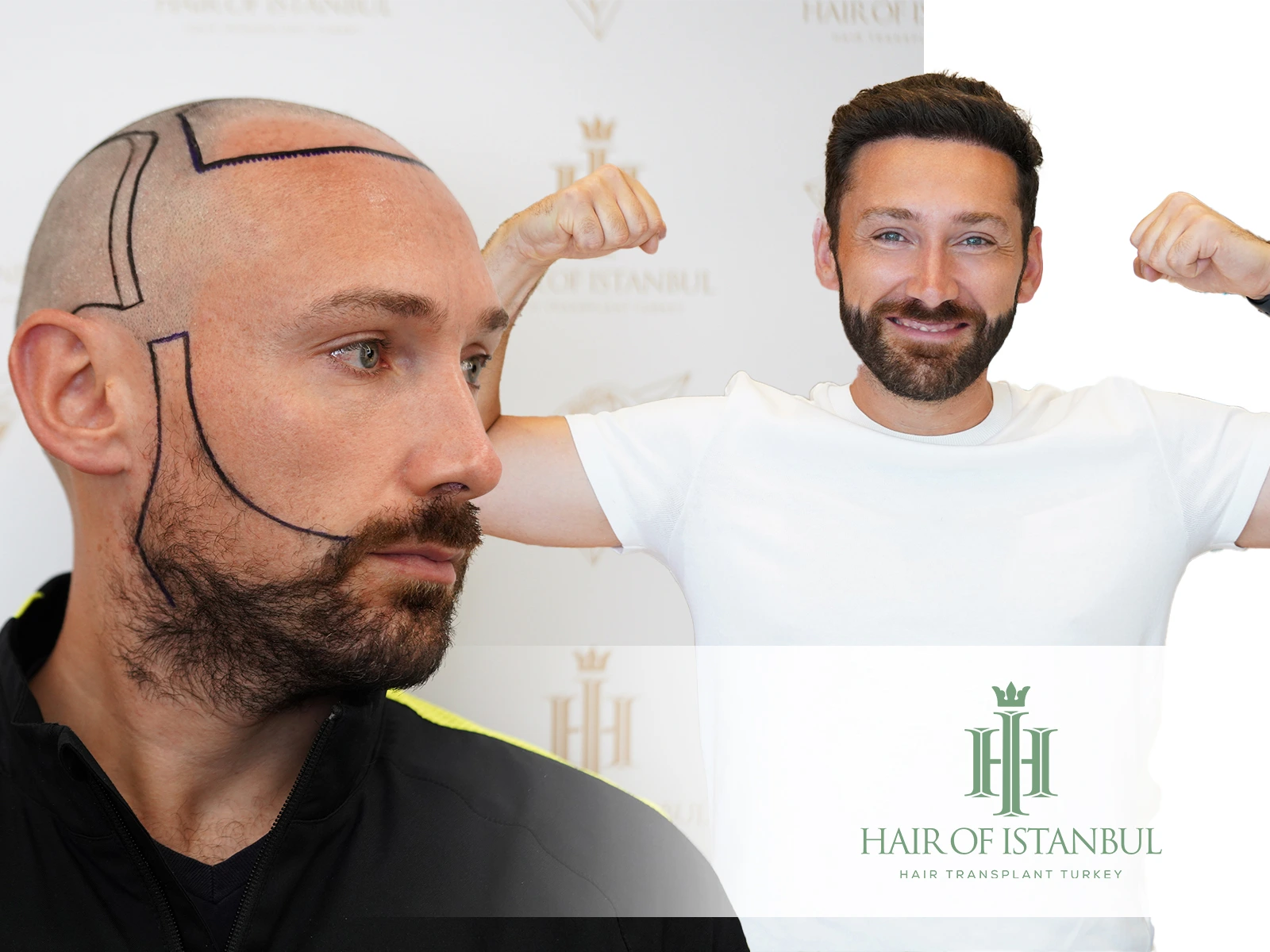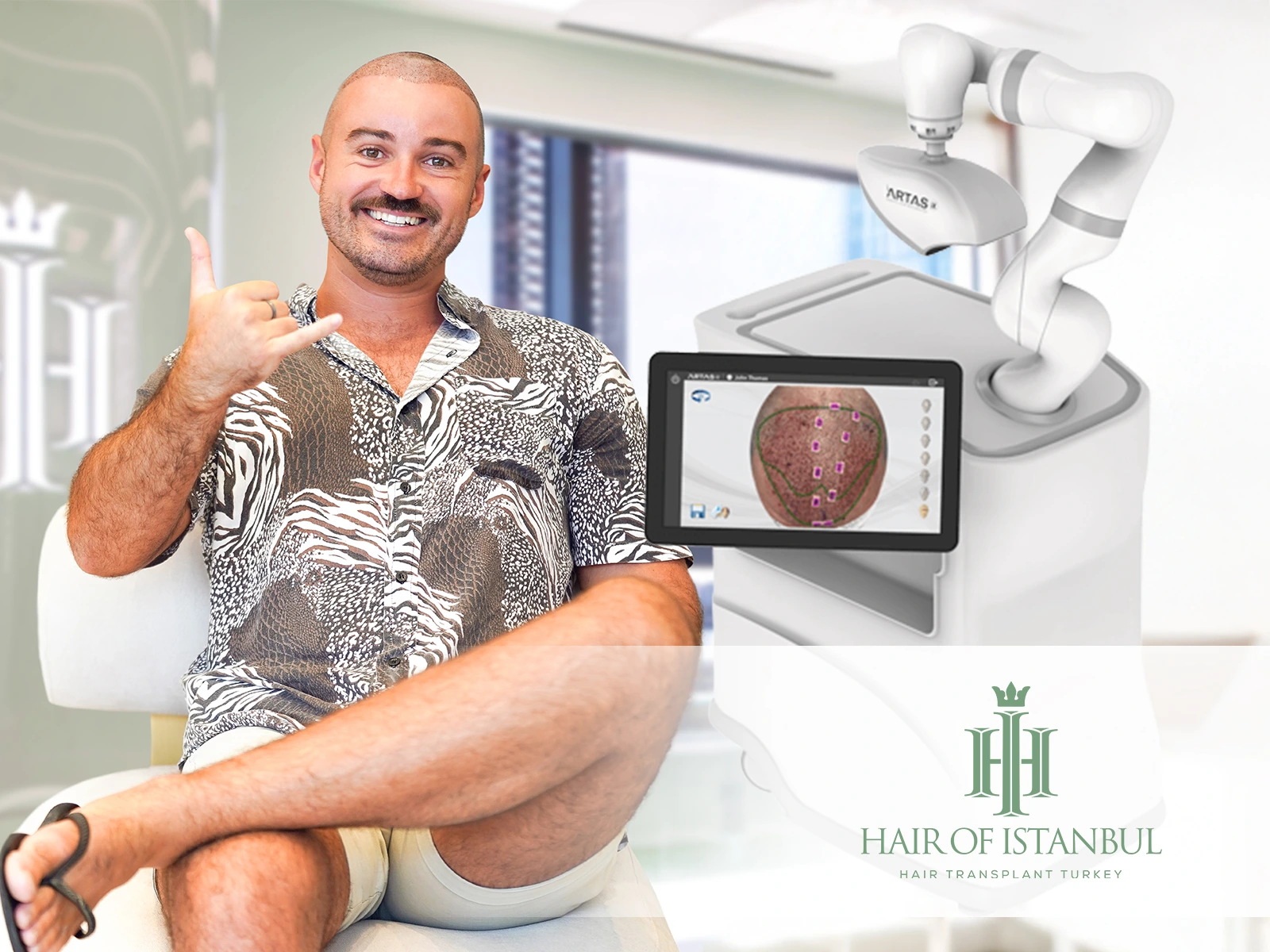Scalp Necrosis After Hair Transplant: What You Need to Know?
Experiencing scalp necrosis after a hair transplant is a rare but significant concern. This condition occurs when blood flow to the scalp is disrupted, leading to tissue death. Though the risk is low, it is one of the most serious complications that can arise from the procedure. Recognizing the signs early is crucial for effective intervention.
Patients might notice symptoms like redness, tenderness, and a foul odor emanating from the affected area. Swift medical attention is essential to manage this condition. Poor surgical technique or improper post-operative care can increase the risk.
Ensuring your procedure is performed by a skilled professional greatly minimizes the chances of encountering such issues. Awareness and preventive measures play a key role in avoiding scalp necrosis. Understanding the causes and symptoms helps patients make informed decisions about their hair restoration journey.
What Is Scalp Necrosis?
Scalp necrosis is a condition where the tissue on the scalp dies due to inadequate blood flow. This complication can occur after a hair transplant, making it one of the most serious risks associated with the procedure. It often results from poorly performed surgeries, leading to areas that eventually scar and fail to grow hair.
The chances of hair regrowth in these affected regions are minimal, emphasizing the importance of skilled surgical techniques. Proper care and expertise during hair transplant procedures are crucial to prevent this severe outcome.
Also Read: Hair Transplant For Widow’s Peak: How to Reverse Hair Loss?
What Are The Factors That Cause Necrosis?
Necrosis following hair transplants typically occurs due to overlooked factors during the procedure. Issues such as inadequate blood flow, infections, and excessive scalp tension can contribute to this serious condition. Understanding these factors helps in taking necessary precautions to prevent necrosis and ensure a successful hair restoration process. Here is a detailed table of the contributing factors:
| Inadequate Blood Supply: | Blood vessel damage during surgery can impede blood flow to grafts. |
| Infection: | Bacterial contamination can lead to inflammation and tissue damage. |
| Scalp Tension: | Excessive pressure from bandages or physical activity can disrupt blood flow. |
| Use of Metal Instruments: | Metal tools can cause significant damage if not used carefully. |
| Deep Incisions: | Penetrating too deeply can harm underlying blood vessels. |
| Dense Implantation: | Overcrowding grafts can restrict adequate blood supply to each one. |
| Smoking and Alcohol: | These habits can impair blood circulation, increasing necrosis risk. |
How Common Is Necrosis After A Hair Transplant?
Necrosis is a potential risk after hair transplant procedures, but it is relatively rare. Scalp necrosis, though a recognized complication, is infrequently reported, especially with the widely used Follicular Unit Excision (FUE) technique.
The majority of patients undergoing hair transplants do not experience this issue, highlighting the safety and effectiveness of modern surgical methods. Ensuring a qualified surgeon and following proper postoperative care significantly reduces the likelihood of necrosis. [1]
Also Read: Hair Transplant After 3 Months: Photos Show Real Results
What Are The Symptoms Of Scalp Necrosis?
Identifying scalp necrosis early after a hair transplant is crucial. Patients may experience temporal headaches, visual disturbances, fever, and scalp tenderness. Redness, swelling, and increased sensitivity in the affected area are also common. Recognizing these symptoms promptly can lead to faster medical intervention, improving outcomes. Here is a detailed table of symptoms: [2]
| Temporal Headaches: | Pain around the temples. |
| Visual Disturbances: | Issues with vision. |
| Fever: | Elevated body temperature. |
| Scalp Tenderness: | Increased sensitivity to touch on the scalp. |
| Redness: | Red coloration of the scalp skin. |
| Swelling: | Puffiness in the affected area. |
What Are The First Signs Of Necrosis?
Early signs of scalp necrosis include a burning sensation and the appearance of bright red skin in the affected area. These initial symptoms are critical indicators that immediate medical attention is necessary. If these signs are observed, it is essential to consult a healthcare professional without delay to prevent further complications.
Also Read: Alcohol After Hair Transplant: Understanding the Impacts!
How Do You Prevent Necrosis After Hair Transplant?
Preventing complications like necrosis after a hair transplant involves several proactive steps. Choosing an experienced surgeon, ensuring the clinic meets high hygiene standards, and avoiding alcohol and smoking are crucial. Proper postoperative care and adherence to the doctor’s advice significantly reduce risks. Here’s a detailed prevention table:
| Expert Surgeon Selection: | Ensuring the procedure is performed by a skilled professional. |
| Clinic Hygiene Standards: | Verifying the cleanliness and sterilization practices of the clinic. |
| Avoiding Alcohol and Smoking: | Reducing habits that impair blood circulation. |
| Personal Care Post-Procedure: | Following a strict hygiene routine after surgery. |
| Adhering to Doctor’s Instructions: | Following all postoperative guidelines provided by the surgeon. |
How Do You Treat Necrosis?
Necrosis after a hair transplant, unfortunately, has no definitive cure as the affected tissues are already dead. This condition means that hair will no longer grow in those areas. Treatment focuses on managing the symptoms and preventing further tissue damage.
Prompt medical attention is necessary to address any infections or complications. Advanced surgical techniques may be explored to improve the scalp’s appearance, but the primary goal is to mitigate the impact of necrosis and maintain overall scalp health.
Also Read: When Can I Exercise After Hair Transplant? Learn the Right Time!
FAQ
Can You Reverse Necrosis?
Necrosis after a hair transplant is a rare but serious complication. Unfortunately, once necrosis occurs, it cannot be reversed. The affected tissue is permanently damaged, emphasizing the importance of preventive measures and early detection.
Will Necrosis Heal On Its Own?
Necrosis is a severe condition that does not heal on its own. Immediate medical attention is crucial when symptoms appear. Delaying treatment can lead to further complications and irreversible damage.
What Does Necrosis Smell Like?
Necrosis typically produces a foul odor, often described as putrid. This unpleasant smell is due to the decay of dead tissue. Recognizing this scent early can prompt quicker medical intervention.
Does Necrosis Spread Quickly?
Necrosis can spread rapidly after it begins. The affected area may expand within a few hours. Prompt medical attention is essential to manage and contain the spread of tissue damage.
Also Read: How Hair Loss Affects Self Esteem: Strategies to Cope!
CONCLUSION
In conclusion, scalp necrosis after hair transplant is a rare but serious complication that requires immediate attention. At Hair of Istanbul, our experienced team is committed to ensuring the highest standards of care to prevent such issues. Our advanced techniques and meticulous approach significantly reduce the risk of complications.
By choosing Hair of Istanbul, you are opting for a clinic that prioritizes patient safety and successful outcomes. We understand the importance of thorough preoperative planning and postoperative care. Trust our expertise to guide you through a safe and effective hair restoration journey.
References:
- [1] Chen J, Feb, 2024 – Recipient site scalp necrosis: A rare postoperative complication of hair transplantation – https://pubmed.ncbi.nlm.nih.gov/37814471/
- [2] Safa Idoudi, Aug 14, 2020 – Scalp Necrosis Revealing Severe Giant-Cell Arteritis – https://www.ncbi.nlm.nih.gov/pmc/articles/PMC7443249/







